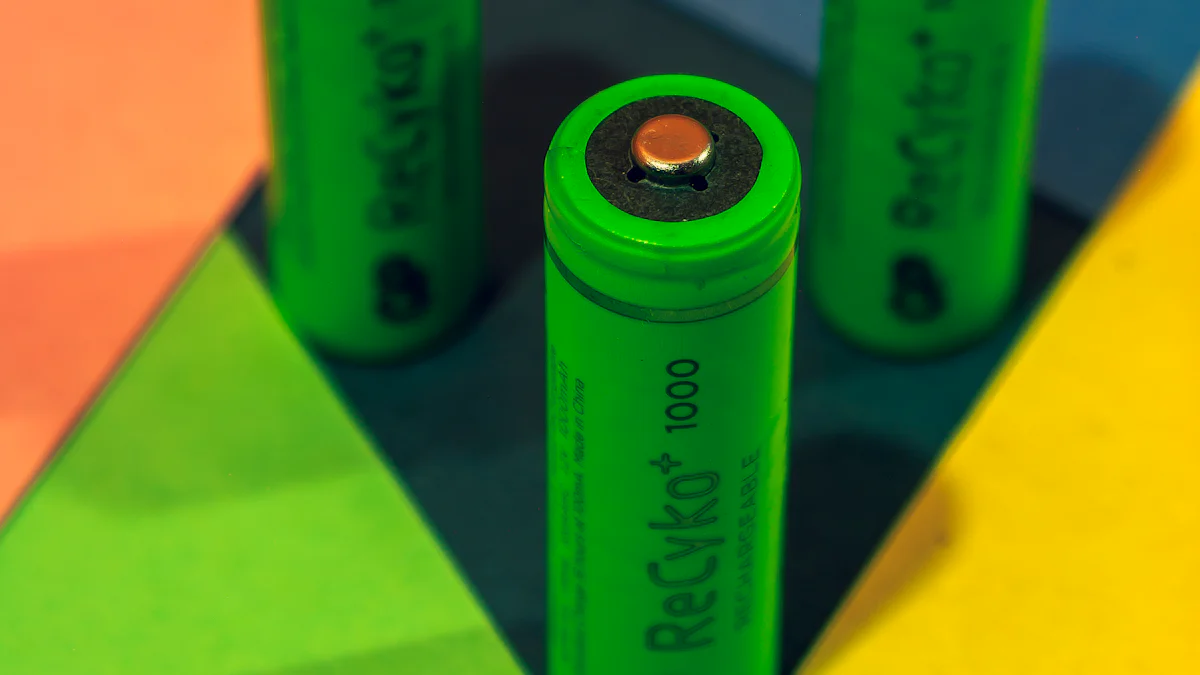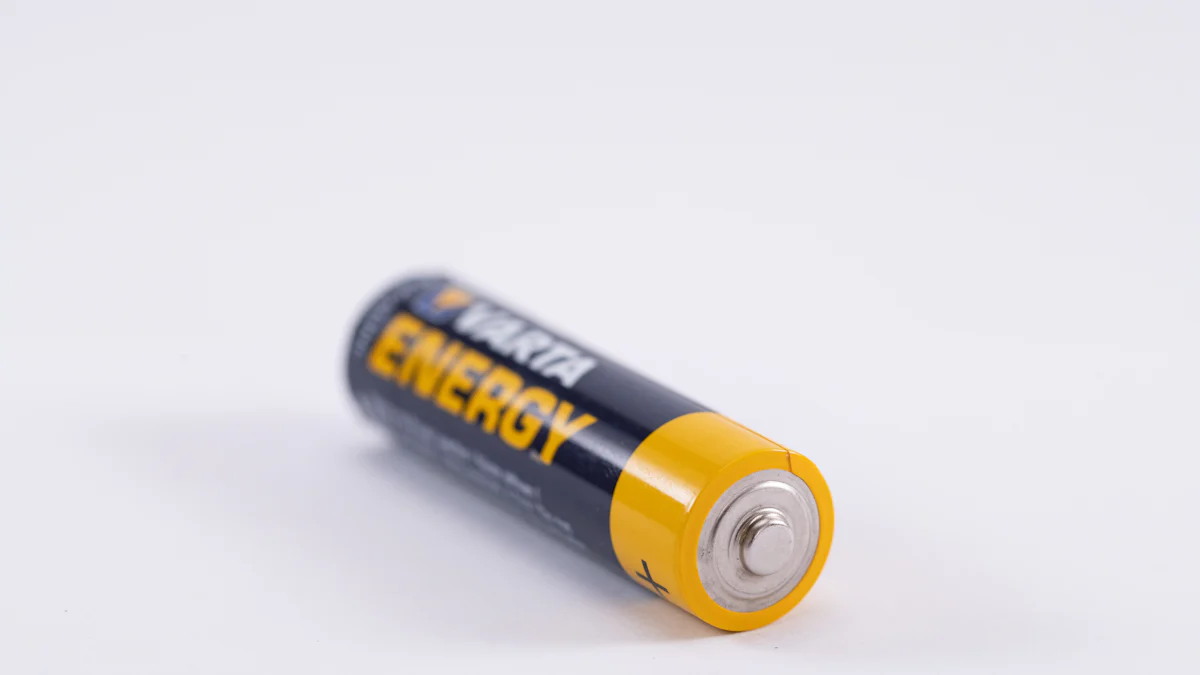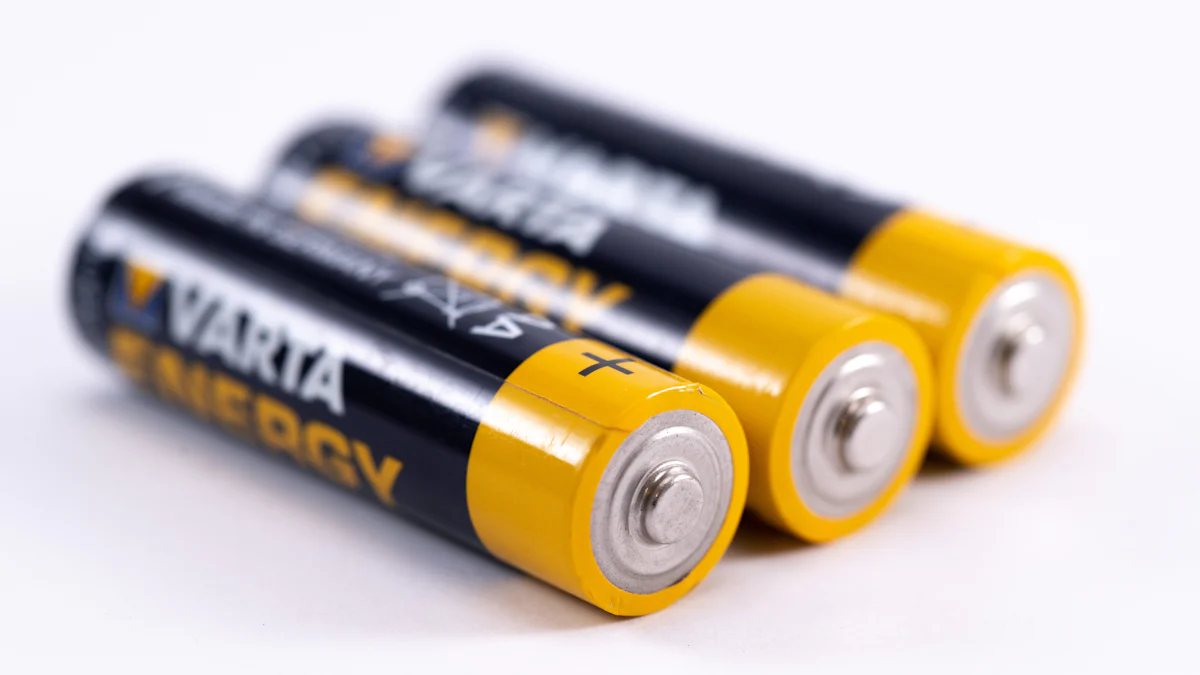
I anticipate the Carbon Zinc Battery to continue being one of the most affordable power solutions in 2025. According to current market trends, the global zinc carbon battery market is expected to grow from USD 985.53 million in 2023 to USD 1343.17 million by 2032. This growth highlights the sustained demand for the Carbon Zinc Battery as a cost-effective option. Its competitive pricing will likely remain, ensuring accessibility for budget-conscious consumers.
The zinc carbon battery is particularly effective in powering low-drain devices such as remote controls and flashlights. Its affordability is attributed to a straightforward manufacturing process, the use of abundant materials like zinc and manganese dioxide, and low production costs. This combination makes the Carbon Zinc Battery a reliable and practical choice for everyday use.
Key Takeaways
- Zinc carbon batteries will still be cheap in 2025. Prices will range from $0.20 to $2.00, based on size and how you buy them.
- These batteries work well for small devices like remotes, clocks, and flashlights. They give steady power without costing too much.
- Buying many zinc carbon batteries at once can save you 20-30% per battery. This is a good idea for businesses or people who use them often.
- The cost of materials and better ways to make them will affect their price and how easy they are to find.
- Zinc carbon batteries are safe for the environment. They are made from non-toxic stuff and are easier to recycle than other batteries.
Estimated Cost of Zinc Carbon Batteries in 2025

Price Range for Common Sizes
In 2025, I expect the price of zinc carbon batteries to remain highly competitive across various sizes. For standard sizes like AA and AAA, prices will likely range between $0.20 and $0.50 per unit when purchased individually. Larger sizes, such as C and D cells, may cost slightly more, typically between $0.50 and $1.00 each. The 9V batteries, often used in smoke detectors and other specialized devices, could range from $1.00 to $2.00 per unit. These prices reflect the affordability of zinc carbon batteries, making them an excellent choice for powering low-drain devices without straining your budget.
Regional Variations in Pricing
Pricing for zinc carbon batteries varies significantly depending on the region. In developing countries, these batteries are often more affordable due to lower production costs and high availability. Manufacturers in these regions scale up production to meet demand, which helps keep prices low. On the other hand, developed countries tend to have higher prices. Premium brands dominate these markets, focusing on quality and marketing, which increases overall costs. This regional disparity highlights how local market dynamics and brand competition influence the pricing of zinc carbon batteries.
Bulk Purchase vs. Retail Pricing
Buying zinc carbon batteries in bulk offers significant cost savings compared to retail purchases. Bulk pricing benefits from economies of scale, allowing manufacturers to offer competitive rates without compromising quality. For instance:
- Bulk purchases often reduce the per-unit cost by 20-30%, making them ideal for businesses or frequent users.
- Retail prices, while convenient for individual consumers, tend to be higher due to packaging and distribution costs.
- Lesser-known brands may offer even lower prices, focusing on affordability, while established brands balance cost and performance.
This cost difference makes bulk purchasing a practical option for those who require a steady supply of zinc carbon batteries. Whether for personal or professional use, understanding these pricing dynamics can help you make informed decisions.
Key Factors Influencing Zinc Carbon Battery PricesRaw Material Costs
The cost of raw materials plays a crucial role in determining the price of zinc carbon batteries. Materials like zinc and manganese dioxide are essential for manufacturing these batteries. Any fluctuation in their prices directly impacts production costs. For example, if the price of zinc rises due to supply chain disruptions or increased demand in other industries, manufacturers face higher expenses. This increase often translates into higher prices for consumers. On the other hand, stable or declining raw material costs can help maintain the affordability of zinc carbon batteries. I believe monitoring these trends is vital for understanding future pricing.
Advancements in Manufacturing Technology
Technological advancements in manufacturing have significantly influenced the cost structure of zinc carbon batteries. Several factors contribute to this:
- Large-scale production reduces the cost per unit, making these batteries more affordable.
- Automated and straightforward manufacturing processes lower labor and operational expenses.
- Readily available materials like zinc and manganese dioxide further reduce production costs.
- Advanced manufacturing capabilities and economies of scale ensure competitive pricing.
These innovations allow manufacturers to produce high-quality zinc carbon batteries at a lower cost, benefiting both businesses and consumers. I expect these advancements to continue shaping the market in 2025, keeping prices competitive while maintaining product reliability.
Market Demand and Competition
Market demand and competition heavily influence the pricing of zinc carbon batteries. Consumers often choose these batteries for everyday devices like remote controls and toys due to their affordability. This consistent demand drives manufacturers to optimize production and pricing strategies. Additionally, competition among brands fosters innovation and cost reduction. Companies strive to capture market share by offering high-quality products at competitive rates. I see this dynamic as a key factor in maintaining the affordability of zinc carbon batteries, even as the market evolves.
Environmental Regulations and Sustainability
Environmental regulations play a significant role in shaping the production and pricing of batteries. I have observed that governments worldwide are increasingly prioritizing sustainability. This shift has led to stricter policies aimed at reducing the environmental impact of battery manufacturing and disposal. For zinc carbon battery manufacturers, compliance with these regulations often requires adopting eco-friendly practices. These practices include using non-toxic materials, improving recycling processes, and minimizing waste during production.
Sustainability efforts also influence consumer preferences. Many buyers now seek products that align with their environmental values. I believe this trend has encouraged manufacturers to highlight the eco-friendly aspects of zinc carbon batteries. For instance, these batteries are made from materials like zinc and carbon, which are non-toxic and easier to recycle compared to other battery types. This makes them a more sustainable choice for powering low-drain devices.
However, adhering to environmental standards can increase production costs. Manufacturers may need to invest in advanced technologies or modify their processes to meet regulatory requirements. These changes can slightly affect the pricing of zinc carbon batteries. Despite this, I expect the affordability of these batteries to remain intact due to their simple design and efficient production methods.
In my opinion, the focus on sustainability benefits both the environment and the industry. It drives innovation and ensures that products like the zinc carbon battery remain relevant in a market that values eco-conscious solutions. By choosing these batteries, consumers can support sustainable practices while enjoying a reliable and cost-effective power source.
Zinc Carbon Battery vs. Other Battery Types

Zinc Carbon vs. Alkaline Batteries
I often compare zinc carbon batteries to alkaline batteries because they serve similar purposes but differ in cost and performance. Zinc carbon batteries are the most affordable option due to their low production costs. Alkaline batteries, on the other hand, are priced nearly double in many markets. This price difference stems from the advanced materials and processes used in alkaline batteries.
The higher cost of alkaline batteries is justified by their extended performance. They last longer and deliver consistent power, making them suitable for devices requiring steady energy. However, zinc carbon batteries remain the best choice for budget-conscious consumers or low-drain devices like remote controls and clocks. Their affordability ensures that users can power their devices without overspending.
Zinc Carbon vs. Lithium-Ion Batteries
When comparing zinc carbon batteries to lithium-ion batteries, the cost difference becomes even more apparent. Zinc carbon batteries are the most affordable power source available. Lithium-ion batteries, however, are significantly more expensive due to their advanced technology and superior materials.
Lithium-ion batteries excel in high-performance applications, such as powering smartphones and electric vehicles. They offer higher energy density and longer lifespans. Zinc carbon batteries, in contrast, are ideal for disposable devices and low-drain applications. Their simple design and low cost make them a practical choice for everyday use.
Cost-Effectiveness for Specific Applications
Zinc carbon batteries stand out as a cost-effective solution for specific applications. Their economical production process and use of readily available materials like zinc and manganese dioxide contribute to their affordability. These batteries are particularly suitable for low-drain devices that do not require frequent power, such as flashlights and wall clocks.
| Characteristic | Description |
|---|---|
| Economical | Low production costs make them suitable for various disposable devices. |
| Good for Low-Drain Devices | Ideal for devices that do not require frequent power. |
| Greener | Contains fewer toxic chemicals compared to other battery types. |
| Lower Energy Density | Suitable for low-drain applications but not for high discharge needs. |
In developing countries, zinc carbon batteries are a popular choice due to their cost-effectiveness. Their simple manufacturing process and affordability make them accessible to a wide range of consumers. For those seeking a reliable and economical power source, zinc carbon batteries remain an excellent option.
Performance and Longevity Comparisons
When comparing the performance and longevity of zinc carbon batteries to other battery types, I notice distinct differences that influence their applications. Zinc carbon batteries excel in affordability and suitability for low-drain devices, but their performance metrics differ from those of alkaline batteries.
| Feature | Carbon Zinc Batteries | Alkaline Batteries |
|---|---|---|
| Energy Density | Lower | Higher |
| Lifespan | 1-2 years | Up to 8 years |
| Applications | Low-drain devices | High-drain devices |
Zinc carbon batteries have an energy density of approximately 50 Wh/kg, while alkaline batteries offer a significantly higher energy density of 200 Wh/kg. This difference means that alkaline batteries can deliver more power over time, making them ideal for high-drain devices like digital cameras or gaming controllers. In contrast, zinc carbon batteries are better suited for devices such as wall clocks or remote controls, where energy demands remain minimal.
The lifespan of a zinc carbon battery typically ranges from 1 to 2 years, depending on usage and storage conditions. Alkaline batteries, however, can last up to 8 years when stored properly. This extended shelf life makes alkaline batteries a preferred choice for emergency devices like flashlights or smoke detectors. Despite this, I find zinc carbon batteries to be a practical option for everyday use due to their cost-effectiveness.
Media Contact
Company Name: Yuyao Johnson Eletek Co., Ltd
Email: Send Email
Country: China
Website: https://www.zscells.com/
